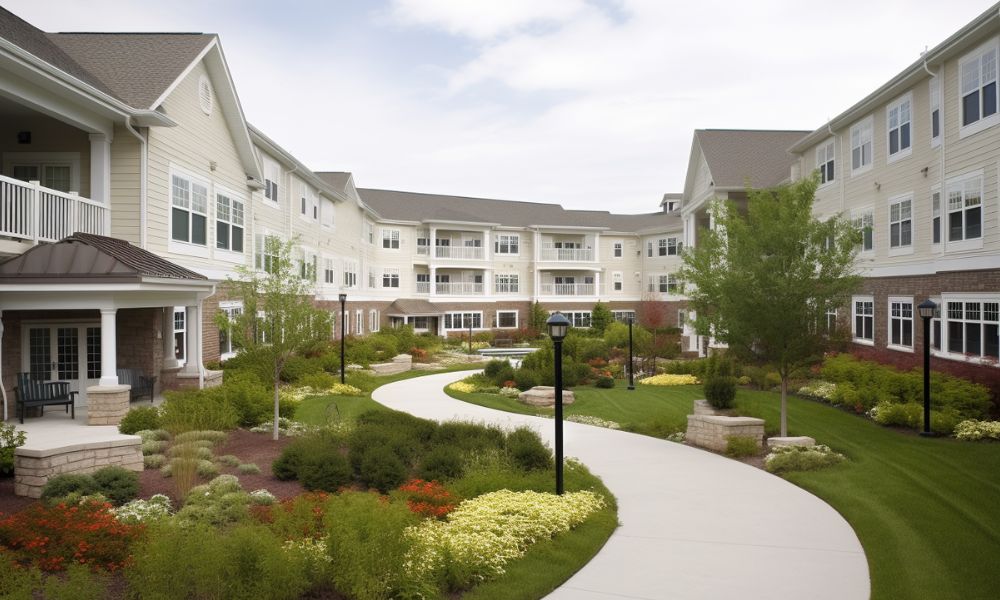A Comprehensive Guide on Housing for Seniors on Social Security
Finding suitable housing on a fixed income is a significant concern for many older Americans. Social Security benefits serve as the primary source of income for millions of seniors, but navigating affordable housing options can be challenging. This comprehensive guide explores various housing programs available to seniors on Social Security, the application processes, benefits, considerations before making housing decisions, and what facilities and utilities typically come with senior housing options.

Understanding Housing Options for Seniors on Social Security
Social Security provides essential income for retirees, but the average monthly benefit often falls short of covering all living expenses, including housing. Fortunately, several federal, state, and local programs specifically target this need. The U.S. Department of Housing and Urban Development (HUD) offers various initiatives including Section 202 Supportive Housing for the Elderly Program, which provides housing with supportive services designed exclusively for seniors. Additionally, Housing Choice Vouchers (Section 8) can subsidize rent in private-market housing, while Public Housing provides units at reduced rates based on income. Some seniors may also qualify for Low-Income Housing Tax Credit (LIHTC) properties, which offer reduced-rent apartments.
How to Apply for Senior Housing Assistance Programs
The application process for senior housing assistance varies by program, but generally follows similar steps. For HUD-sponsored housing like Section 202 or Section 8, seniors should contact their local Public Housing Authority (PHA) to begin the application process. Required documentation typically includes proof of age (62+ for most senior housing), proof of income including Social Security award letters, bank statements, tax returns, identification, and citizenship or eligible immigration status. Many programs maintain waiting lists, so early application is advisable—often 6-12 months before needing the housing. Some specialized senior communities may have additional application requirements, such as health assessments to determine the appropriate level of care needed.
Benefits of Senior Housing Through Social Security Programs
Senior housing programs offer numerous advantages beyond financial assistance. Most subsidized senior communities foster social connection through common areas, planned activities, and events that combat isolation—a significant health risk for older adults. Many properties feature universal design elements and accessibility features like grab bars, wider doorways, and emergency call systems that support aging in place. Transportation services are commonly available, helping seniors maintain independence when driving is no longer an option. Additionally, on-site service coordinators often help residents access community resources, healthcare services, and benefits counseling. Perhaps most importantly, these housing options provide stability and predictability in housing costs, allowing seniors to budget effectively on their fixed Social Security income.
Important Considerations Before Securing Senior Housing
Before committing to any senior housing option, several key factors deserve consideration. Location should align with your needs—proximity to family, healthcare providers, and community resources matters significantly. Understanding exactly what housing costs include versus what you’ll pay separately helps prevent financial surprises. Each housing program has specific rules regarding guests, pets, and how long you can be away from your unit while maintaining residency. Additionally, assess the environment for safety features, community atmosphere, and whether the noise level and activity match your preferences. Finally, consider future needs—some properties offer multiple levels of care that allow residents to transition as their health requirements change.
Facilities and Utilities Included in Senior Housing
The amenities included in senior housing vary widely depending on the property type and program. Most subsidized senior apartments include basic utilities such as water, sewer, and trash removal in the rent, while electricity and internet may require separate payment. Common areas typically feature laundry facilities, community rooms, and outdoor spaces. Higher-end or continuing care communities might offer fitness centers, libraries, gardens, and dining facilities. Transportation services for medical appointments, shopping, and social outings are commonly provided, though schedules may be limited. Maintenance services generally include appliance repairs, plumbing issues, and common area upkeep. Some communities also offer additional services like light housekeeping, meal programs, or wellness checks for an extra fee.
Cost Insights for Senior Housing on Social Security
Senior housing costs vary significantly based on location, amenities, and the level of care provided. Most HUD-subsidized housing programs calculate rent based on 30% of the resident’s adjusted gross income. For comparison, different housing types have different standard cost structures:
| Housing Type | Average Monthly Cost | Typical Amenities | Payment Assistance |
|---|---|---|---|
| Public Housing | $300-600 | Basic utilities, maintenance | Direct subsidy |
| Section 202 Housing | $400-700 | Supportive services, some meals | Project-based subsidy |
| Section 8 Voucher | Varies (30% of income) | Varies by property | Portable voucher |
| LIHTC Property | $500-900 | Community spaces, some utilities | Below-market rent |
| Senior Apartments (Market) | $800-1,800+ | More amenities, activities | No built-in assistance |
Prices, rates, or cost estimates mentioned in this article are based on the latest available information but may change over time. Independent research is advised before making financial decisions.
Making an Informed Housing Decision
Housing decisions significantly impact quality of life, particularly for seniors living on Social Security benefits. Taking time to research all available options, understanding application requirements, and considering both current and future needs leads to better outcomes. Many seniors benefit from consulting with a housing counselor certified by HUD or speaking with their Area Agency on Aging, which can provide personalized guidance based on local resources. While waiting lists for subsidized senior housing can be lengthy, proper planning and early application can secure affordable, appropriate housing that enhances independence and wellbeing throughout retirement years. By leveraging available programs and carefully evaluating options, seniors can find housing solutions that stretch their Social Security dollars further while maintaining dignity and comfort.
This article is for informational purposes only and should not be considered medical advice. Please consult a qualified healthcare professional for personalized guidance and treatment.




